In the 70s and 80s and 90s, Sam’s took on a strong working class character. I Berkeley’s manufacturing and industrial sector had yet to collapse. Workers from Emerald Packing, Macy’s Movers, Jacuzzi Pump, Consolidated Printers, Palmolive, and other plants came, drank, and went home. Like the song says, the bar was open Monday to Friday, 8:00 to 8:00.
Sports announcer Lon Simmons would stop by. Crime writer Mickey Spillane visited. As a boy, Billy Martin is said to have swiped ice cream from the freezer.
There was a full-bore blue collar culture at Sam’s that Michael McNevin absolutely captured/nailed/crushed in his song, the lyrics of which I used to begin my first post about Sam’s.
When Michael McNevin heard that there were traces of the bar intact, he communicated a strong desire to visit. Gary Robinson was up for it. He’d heard Michael’s song himself for the first time and reported a strong emotional reaction. McNevin was invited and asked to bring his guitar. He appears in the song as “Charlie,” hanging out at the bar with his friend “Spanky” in the 1990s. Once McNevin was given the bar name Charlie, it wasn’t long before Sam just called him “Chuck.” Of course. He explains in the introduction to the song below.
He came to Sam’s and sang. It was great! We listened to the song with its Damon Runyanesque stories about a bar that had been closed and empty for almost 20 years. Gary Robinson leaned against the bar top smiling. It was a perfect Zen moment. It was a crazy idea to have him come sing at the bar. What do we do with crazy ideas? All together now:
Below you will learn about the important role that Kessler’s “Soft as Silk” Whiskey played at Sam’s 58 Club. It seemed fitting to have a bottle there for Michael’s song. He hadn’t played the song in a while. He wrote it using a DADGAD tuning. Here he played it with a Drop-D turning (DADGBE). Didn’t matter. He nailed it. What a moment!
In its day, Sam’s was a predominantly male scene. “Buffalo Woman” was an exception to the “No Tomatoes” ethos. The fact that she had bettered Dancing Dan in a fight helped her cause.
It was a predominantly white scene, although Black Joe Queenan was a regular.
Sam and Juan Mejia from the nearby Juan’s Place Mexican restaurant were close friends. Sam loaned Juan seed money for his restaurant in 1972.
The two primary bartenders were known as “the bookends.
George Hildebrand retired from his job as a general foreman at Colgate-Pamolive company in 1981. He died in 2016. Bruno Andriena delivered meat before going to work at Sam’s as the other bookend. Bruno would answer the pay phone, which is where Jack Macy from Macy’s Moving sat. Men would duck. Bruno would glance around the bar and say, “I don’t see him.
There was a kitchen. Joe Talerico cooked. Robbie, nicknamed Wing Nut, lived the basement of Uncle Clarence’s house next door. He made the pork butt. Fridays was spaghetti crab day. Sam’s wife Winnie sometimes made meat loaf. Sam’s mother Mary made chili.
Son Steve became a central figure in the bar. He is shown here in the kitchen, a few years after the photo above it with his mother Winnie. .
Sam sold hot nuts and his famous hot dogs at the bar. There were always hot dogs ready in the hot dog machine, Miller hot dogs. Ben Miller was a German sausage maker who started manufacturing smoked meat products in Oakland in 1910. They were popular with Sam’s customers. He sold them by the case.
Sam sold other food for customers to take home – cheese, eggs, or whatever fell off the truck or walked through the back door.
There were also gifts for sale, which came in handy for men wanting to pick up a birthday present or Christmas present or peace offering before going home. Every Tuesday Sam would go to the Blue Chip Redemption Store on Cutting in Richmond with a roll of cash and load up his car with damaged gifts. It is possible that some transactions involved gifts that were not damaged.
The kitsch gifts and liquor and collection of beer cans and motel keys and Disney stuff all added up to a delightfully cluttered back bar.
Kessler Whiskey was the house favorite. Sam and his customers called it “Vitamin K.” Kessler markets it as being “Smooth as Silk.” It is also claimed to be the second most popular whiskey in the United States. Sam’s was a good Kessler’s customer, and Kessler included Sam’s in its celebration of selling 20,000,000 cases.
Beer was a $1, an unofficial agreement of San Pablo Avenue bar owners.
Regulars had personal steins.
Ali called Patterson an “Uncle Tom” for calling him Cassius Clay instead of Muhammad Ali. Ali didn’t go for an early knockout. Instead he mocked and punished Patterson until knocking him out in the 12th round.
Photos of boxers filled the wall on the southern end of the bar. Girlie photos were tacked to the ceiling above the bar stools, behind the drinkers here.
There was a juke box – of course.
There was a “Sniveler corner.” In January, 1997, Sam announced that the “Sniveler of the Month Award” was canceled as there were too many finalists.
There was a slot machine or two.
The main gambling involved “shaking” numbered peas. He who shook the low number lost the bet or bought the next round. Sam would shake for anything and everything. He loved to bet.
Sam loved Mickey Mouse. There was Disney stuff all over the bar. Sam was a member of the Club 33, a private club at some Disneyland parks for corporate sponsors and VIPs.
He sold Mickey Mouse watches. It is said that he sold more Mickey Mouse watches than any business outside Disneyland.
Winnie offered a check-cashing service. The sign was kind of a joke. She’d tally the customer’s debts from the week and pay the balance.
There were two cash registers – the Italian piano and the Jewish piano.
We saw photos of young Sam drumming when he was in the Navy. In the bar, he played the spoons, banging them on spent ordinance.
Sam wore his Shithouse Mouse pin every day. If he happened to forget it and you happened to notice, you drank for free. There was a six-foot mouse trap on one wall.
And this. Great art!
Bars often have a private language, or at least a collection of private Witty Things To Say.
So it was was Sam’s, as shown in a bar newsletter:
This compilation of sayings comes from a regular newsletter. If you click here you will be directed to a post of the known copies of the newsletter.
Sam’s 58 swag? Of course.
The bar boomed through the 1990s, but age was catching up on Sam. Berkeley’s no smoking ordinance hit bars hard, and industrial Berkeley with its blue collar workforce was vanishing.
The last hurrah was on June 12, 1999. Hundreds of customers packed into the bar.
Gary Robinson was there, the long-time customer who almost 20 years later would open up Sam’s for our visit. If you look up wistful in the dictionary you will see this picture illustrating the word.
One last set of photos – a miniature re-creation of Sam’s made by Nina Carazaro, daughter of Uncle Johno.
Well done,no?
The family that Sam’s Club built started with Sam and Winnie.
We saw Sam and Winnie at their wedding, and then standing in front of the bar in the early 1950s. Here they are flirting with middle age, Sam with his ever-present bankroll.
And here – in the golden years.
Winnie died onJanuary 5, 2009. Sam died on May 13, 2013
This exploration of Sam’s started with a crazy idea that I trusted. I remember the fall evening when I first drove down to Sam’s and looked it over. Several more crazy ideas came along the way. I trusted them. Proof positive here – trust your crazy ideas.
What I know of Sam’s comes from walking into the bar on a cold and gray day and listening and looking for ghosts and hearing McNevin’s song, talking with Gary Robinson, talking with Steve Pedone whose generosity was without limit, a brief conversation with Bruno, and a few really good hours sitting with Steve going through photos on his kitchen table and looking at relics from the bar. Linda Rosen of the Berkeley Historical Society researched and wrote about Sam’s – a big help.
The cast of characters emerges bigger than life – Sam, the Bookends Bruno and George, Wing Nut, Winnie, Gary Robinson (his bar name was “G. Lee”), Buffalo Woman, Dancing Dan, Cousin Johno and Steverino, with boxer photos and girlie pictures and motel keys and a beer can collection and cheap gifts for sale.
Four generations of the Pedone family worked in the bar, but that is a little misleading because it was all family. Every regular was family. That truth emerges loud and clear when talking with those who were there. Berkeley Big Love, blue-collar, dollar-beer, all-family Italian-style.
When Berkeley lost its manufacturing and industrial base, it began to lose its once-robust working class culture. As gentrification has encroached on once-working class neighborhoods west of San Pablo, we are at risk of completely losing the economic diversity that we have enjoyed and that has informed our character and culture. This is not a polemic against gentrification though, this is a celebration of a now-gone bar and a disappearing part of Berkeley.
Sam and Sam’s were bigger than life.
I showed the draft post to my friend.
“My dad was a huge Jackie Gleason fan. The Honeymooners was mandatory family watching. Good times.”
“He loved the ‘Joe the Bartender’ skits. Frank Fontaine played Crazy Guggenheim who was always drunk. My cousins called my dad ‘Uncle Lushwell,’ a character in Jimmy Hatlo’s ‘Little Iodine.’ My dad wasn’t a big drinker, but he liked the nickname.”
I thanked him for his Joe the Bartender trip down Memory Lane and asked – what about the post?










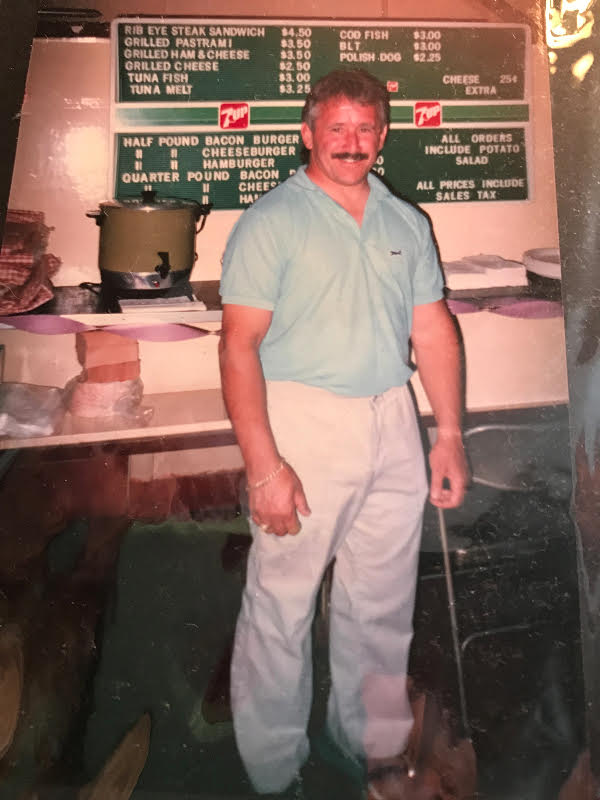


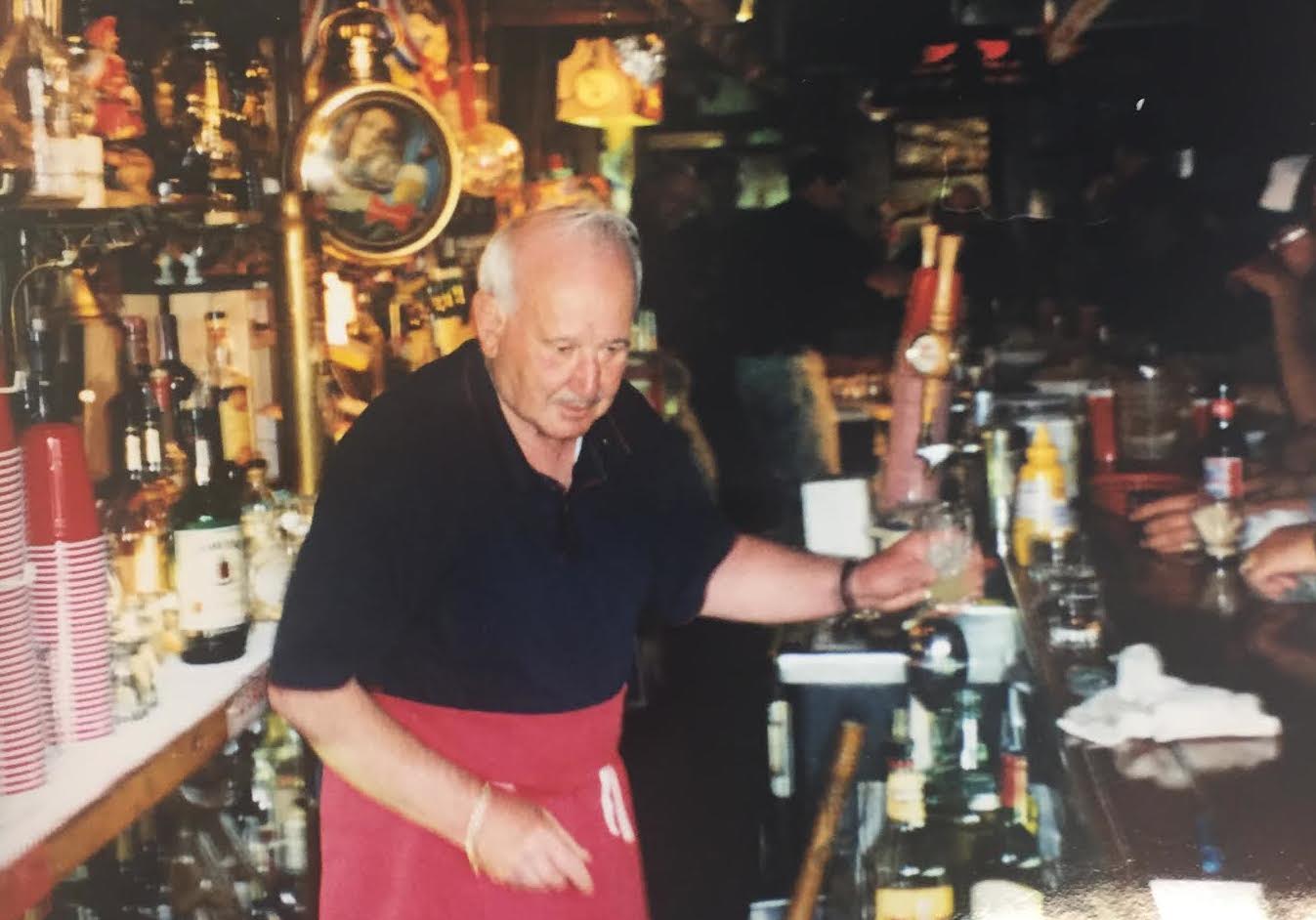






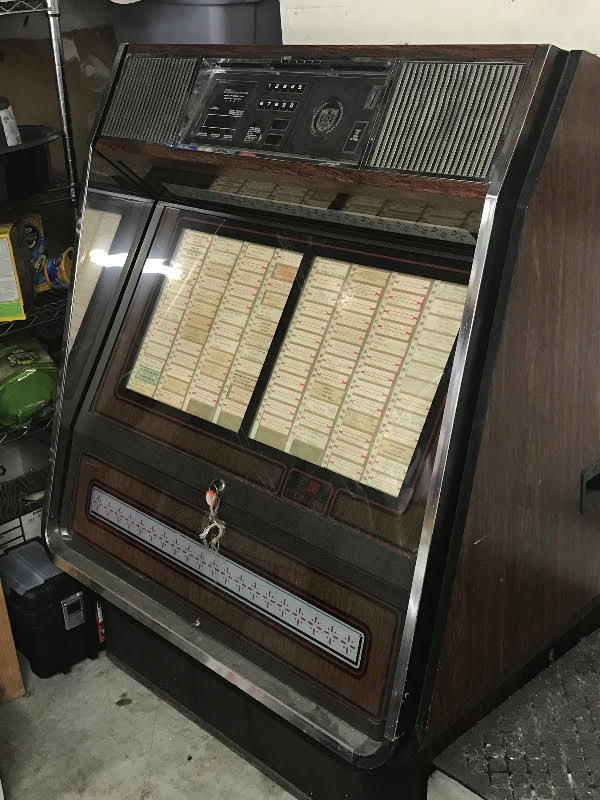





















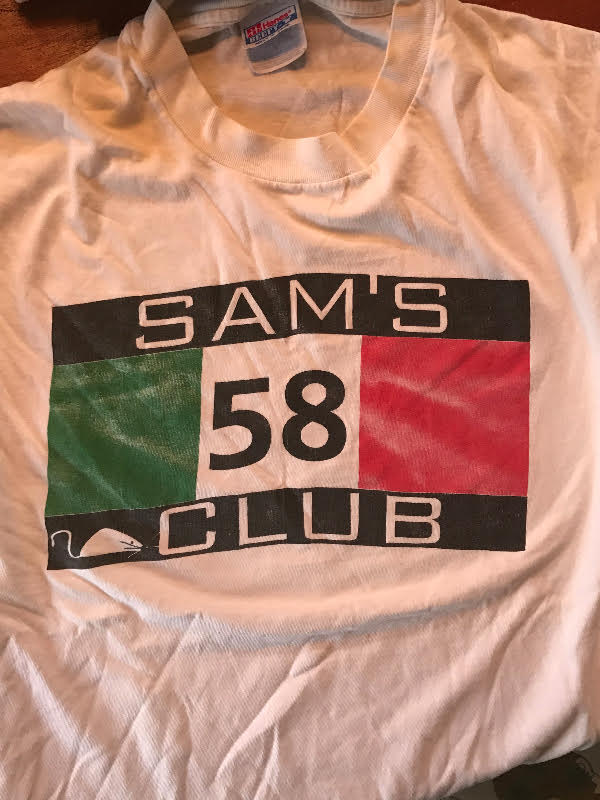









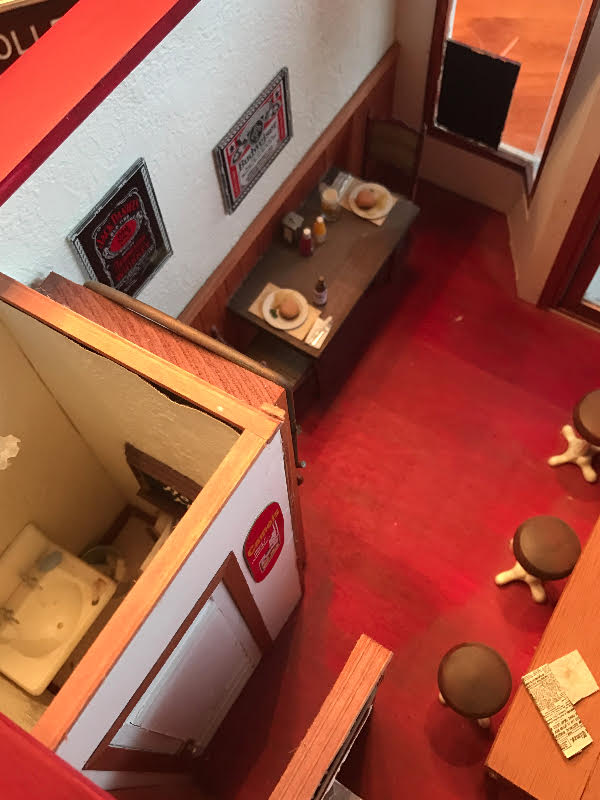







SHIT HOUSE TOM I am setting in my office with pictures and 58 Club stuff all around me and reading your latest draft on the 58 Club you turned made me remember what a GREAT man my dad was and all of the good things he did for all of his friends and family it’s not fair that you came late on to the seen but you nailed the story of the 58 Club as though you had a tab there looking forward to seeing you again and to add more pass on more photos and stories Thank you SH Steve
I remember your dad, went to work with my dad in the summertime and he’d take me to Sams at lunchtime and sometimes after work.sam would get me a hot dog and a “Adult” beverage ( seven up and red syrup with a cherry ) always treated me like a king, I was 10 or 11 years old, still impressed with Sam 50 years later,you were lucky to have such a wonderful Dad and thanks for sharing him with all of us, George was my Father, he worked as a printer atLitho Process on seventh st. Right around the corner from the 58 Club.
Great articles on the Shithouse Mouse, Bruno and George and the 58 club.
I can still picture Sam yelling “Hit it!”, shaking a die out of the leather bottle, and after his peculiar whistle, yelling, “Winner!” even if he lost.
I used to live a block away on 10th St., across the street from sculptor Martin Metal and rarely went in when I lived there as I instead used to frequent the BBI (Bay Bridge Inn) on the corner of San Pablo and Grayson.
It wasn’t until I started working at the City of Berkeley Corporation Yard that I started going to either Brennan’s or Sam’s 58 Club with coworkers for a couple of drinks or beers after work.
Southwest Berkeley used to have a substantial industrial base, with Cutter Labs, Colgate Palmolive, and Langendorf bakery to name a few, and workers in the area typically frequented either Granata’s restaurant and bar, the Missouri Lounge, the BBI or Sam’s 58.
There also used to be quite a few printers in the neighborhood including the UC Press which prints all of Cal’s publications and Howell-North Publishers, specializing in books for railroad enthusiasts, as well as a few smaller print shops.
One time when I was in Sam’s, I met a guy who operated a paper cutting machine at UC Press down the street.
He was complaining that he was having trouble adjusting his machine to cut pages properly and was worried that ge might get a demotion as a result.
I have never worked on such a machine but I have adjusted other types of machines with similar functions.
I casually advised him how might be able to solve the problem and he asked if I could show him how to do it.
I told him that I wasn’t particularly keen on entering UC property but he explained that his machine was close to the door and all had to do is stand outside and direct him.
To my surprise, the machine looked almost exactly as I had envisioned based on his description.
I told him what, where and how to adjust the pertinent sensors, which he did successfully.
He was amazed, called me a genius and asked what he could pay me for helping him.
I replied that I wasn’t a genius at all but instead was a competent IBEW union electrician and that he could compensate me by buying a few drinks.
Excellent job. Loved the idea when we met. i loved Sam and the club was my home away from home. Going back in time with your articles brought many a tear to my eyes. Tears of joy from the great times and pictures and Tears of sadness as i miss my compadres from yesteryear. it was a place like no other and will never be again. Glad I made the trip. Hit It, you tight bastard !!
What no one has mentioned and should be is the fact that with all the charm, this place was clearly homophobic, racist (yes I know, you mentioned one Black person who was a customer), and antisemitic (hello: “Jewish cash register”?). While places like Sam’s are a fascinating cultural relic, part of the reason they died was not just a dwindling customer base, but also that they institutionalized their culture to a point that no one else would ever feel welcome in modern times. Their quaint way of behavior was not just outdated, they were categorically the very quality that made America in those days repressive and aggressively anti anything that wasn’t like them. Indeed a “club”, but one that died by necessity.